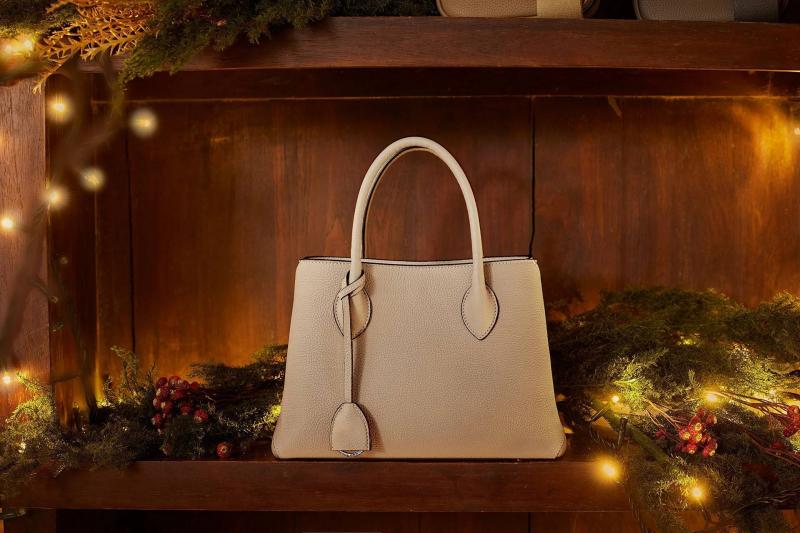It seems that the relationship between women and handbags is not a recent phenomenon, but dates back thousands of years. This has been confirmed by researchers who discovered ancient wall carvings depicting square handbags with short, semicircular handles. According to a report published by the "Daily Mail," some of these engravings date back 12,000 years, a time preceding the use of makeup, perfumes, and brushes. The oldest images were discovered in Turkey beneath the ruins of the Göbekli Tepe temple, a megalithic structure built around 9,000 BC, characterized by large T-shaped stone pillars arranged in circles, and likely used for social gatherings and religious rituals. Some structures within the temple feature carvings that appear to represent clothing, belts, shirts, and handbags. Experts are not exactly sure what these symbols mean, but they have hypothesized that ancient humans saw the design as related to the universe.
Archaeologists have made similar discoveries in Iraq, where giant stone slabs were found among the ruins of an Assyrian palace built between 883 and 859 BC, depicting a genie with wings holding what some claim is a handbag, while others believe it to be a small bucket. Many experts agree that it was made for carrying magical potions that the genie would sprinkle in the halls, while other translations suggest that the artwork depicts a bag filled with intoxicants.
Historian David Miano stated in a recent YouTube video, "The figures in the Assyrian engravings have human bodies and animal heads known as abkalus." He explained that these are lesser deities with protective abilities, "carrying these items that people refer to as handbags, but they are actually buckets for carrying sacred palm water," pointing out that archaeologists have found ancient buckets in Iraq resembling these carvings.
The same symbol was found in Tula, Mexico, among the ruins of the Toltec civilization, depicting a human carrying a bag surrounded by a snake. The giant stone statues in Tula also show figures with a bag beside them. Researchers have discovered the same design in parts of South America, raising further questions about the meaning of this symbol, especially considering that ancient civilizations had a similar perception of bags. The ancient images in these sites are nearly identical to modern handbags; however, experts believe many of these images actually depict baskets rather than handbags. It is known that the first modern handbag, as we know it, was designed by Samuel Parkinson in England in 1841 when he needed a travel bag for his wife to carry personal items that were too much for a small handbag.
Another piece of evidence for the ancient nature of the handbag is found in ancient Egyptian hieroglyphics, which show deities carrying a small square bag symbolizing prosperity. While archaeologists have found evidence of civilizations using baskets and tool bags, they have not yet uncovered what has been carved on the walls. There is also symbolic significance. As reported by "Live Mint," the square bag "may symbolize the earth, while the connected circle represents spirituality." Ancient texts showed that past civilizations believed the earth was flat, which may explain why it was artistically represented as a square. However, researchers argue that the design represented the relationship between our planet and the sky.
Today, women's handbags are more than just an accessory; they reflect women's varied roles in society, represent a practical tool combining functionality and style, enabling women to organize their daily lives more effectively and efficiently. Whether carrying basic tools or personal necessities, the handbag remains an integral part of a woman's daily life. It should also be noted that the most expensive handbag in history is the "1001 Nights" bag, designed by the Emirati company Mouawad and embellished with diamonds, costing $3.8 million.




